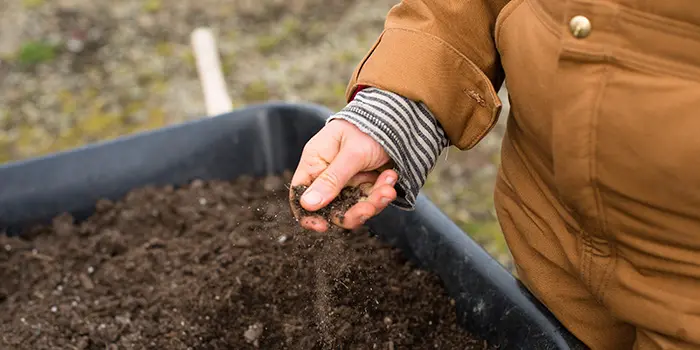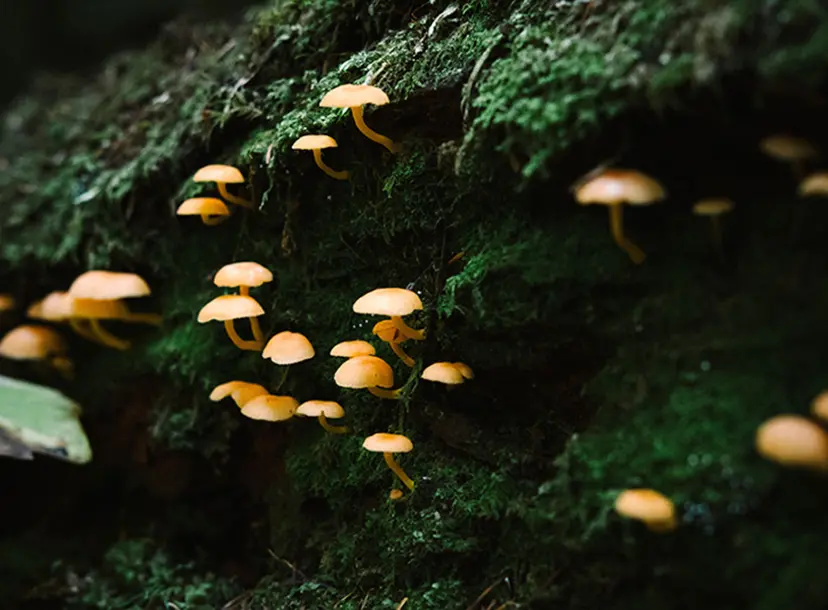This essay was written by fourteen-year-old Zara Hussan from Plashet School in East Ham (London), the very first winner of the Association of British Science Writers Young Science Writer of the Year Award, a competition supported by the BBC and the Ri. This article first appeared on BBC News.
A forest is home to billions of organisms, some of them are too small to be seen by the naked eye. Collectively, these microbial species contribute more to our planet than we could ever imagine. While we know that forests play a major role in fighting global warming by acting as reservoirs for carbon. What is less known about, is how the microorganisms they contain also serve to reduce greenhouse gas emissions.
Naturally, the trees in our forests absorb carbon dioxide in the atmosphere during photosynthesis, and subsequently trap carbon in their biomass. This process removes atmospheric carbon and therefore reduces the greenhouse effect. The entire Amazon rainforest has taken in 1.7 billion metric tons of CO2¹.
These trees do not act in isolation; rather they work alongside an entire microbiome consisting of fungal communities. A study by researchers from Imperial College London revealed that ectomycorrhizal fungi enable certain trees to absorb CO2 faster than others - this is known as the CO2 fertilisation effect². These fungi were also found to reduce the activity of decomposers and delay the process of decomposition which releases CO2 into the atmosphere. As a result, these fungi limit the amount of carbon dioxide released into the atmosphere and thus reduce the effect of global warming.

This discovery has been applied to the agricultural industry with Arbuscular Mycorrhizal Fungi (AMF) being considered a promising technology for future sustainable farming systems. Research conducted into planting AMF in targeted soils has shown how it can not only help enrich soil fertility, but also reduce CO2 levels in the atmosphere.³ Using AMF is also a safer alternative to chemical fertilisers which add excess nitrogen to the environment and pollute nearby water sources. A natural solution to chemical fertilisers will protect local ecosystems as less eutrophication will take place, for example, which harms aquatic organisms.
The benefits of biofertilisers, such as AMF, have been widely recognised and have resulted in the global biofertiliser market reaching a value of USD 2,391.51 Million in 2021⁴. The North American region accounts for a share of 28.7% of the bio-fertilizers market by 2024 which shows their proactive role in sustainable agriculture⁵.
Conversely, there are some drawbacks to biofertilisation. Although many farmers are in support of biofertilisers, since they will enhance their soil health and result in higher crop yields, the switch from chemical fertilisers will also come at a financial cost. For instance, farmers will be forced to rely on labour-intensive methods of farming and will need to use specific machinery to produce biofertilizer. In response to this, the UK government has developed a scheme called ‘The Sustainable Farming Incentive (SFI)’ to provide financial assistance to farmers participating in sustainable farming practices .

At present, the existence of naturally-occurring fungi in our forests are being put at risk by chemicals, such as nitrous oxide. Researcher, Colin Averill, believes that nitrogen in chemical fertilisers weaken the soil organisms⁷. This explains why ectomycorrhizal fungi become so sensitive under the use of chemical fertilisers. A link has been found between the loss of these fungi and the reduction in carbon content in forest soils. This proves that without these fungi more carbon dioxide is released into the atmosphere, hence furthering global warming and climate change. Likewise, deforestation is another reason for the decline in microbial diversity in forests as it disrupts delicate ecosystems.
In order to preserve ectomycorrhizal fungi, there is a need for reforestation and other plantation projects. For example, Averill believes that by transplanting soil, there will be a chance for fungal restoration⁷. He argues that taking these steps is necessary to help protect microbial communities. What is more, many conservationists are protesting land use changes and are including fungi in resolutions for climate change by focusing on studying soil microorganisms. This provides more evidence that mycorrhizal fungi have a significant part in removing carbon from the atmosphere and ultimately delaying climate change.
Furthermore, a project led by the Society for the Protection of Underground Networks (SPUN) has focused on understanding the ways microorganisms are essential in protecting our soils⁷. This programme was founded to research the works of microbial communities and then work on using these nature-based solutions to prevent climate change. In conclusion, many of the microbial communities that work underground actually provide our planet with a lot of assistance, especially when it comes to combating climate change. These fungi protect our planet by keeping the harmful carbon out of our atmosphere and yet we are compromising their presence. We as consumers can do more by purchasing organically farmed goods to support sustainable agriculture. This will ultimately protect our ecosystems and help stop climate change.
About the award
The Young Science Writer of the Year Award is designed to get students aged 14-16 thinking and writing about the big questions in science, technology, engineering and maths, at a time when the rise of misinformation and dis-information, which is disproportionately consumed online by young people, is of increasing concern to children’s charities worldwide.
Zara’s essay has been published on the BBC website alongside the work of professional science writers. She received her award – including £1000 to help with her writing development, a year’s ABSW membership, and mentoring from a senior science writer – in front of her classmates at a special event at the Royal Institution.
Read the two runner-up essays:

References:
1. https://news.mongabay.com/2021/09/new-study-offers-latest-proof-that-br…
2. Plants' ability to slow climate change depends on their fungi | Imperial News
3. Arbuscular Mycorrhizal Fungi as Natural Biofertilizers: Let's Benefit from Past Successes - PMC
4. https://www.globenewswire.com/news-release/2022/04/01/2414570/0/en/Glob…
5. https://www.researchnester.com/reports/bio-fertilizers-market/193
6. Sustainable Farming Incentive: how the scheme will work in 2022 - GOV.UK
7. https://news.mongabay.com/2021/12/scientists-on-a-quest-to-map-worldwid…
